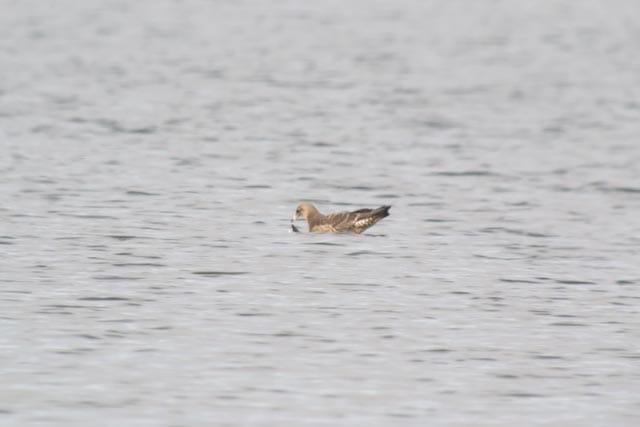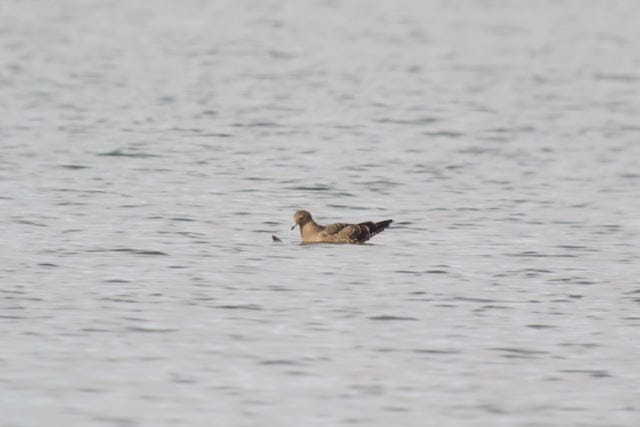My travels have taken me all over the United States including coastal sites where some of the most interesting flyers can be found. Some of the more crazy fliers in my mind include jaegers. Our three regularly occurring jaegers are amongst the nastiest flyers around. And by nasty I mean, “MEAN.” They fly with a direct purpose and bully large birds like gulls and many terns to drop their catch so they can feast properly. They are built like large torpedoes and fly like a torpedo swims. Jaegers come in hard and fast and can change direction at the drop of a hat to keep up with the birds they are harassing.
Lucky enough for me, living on the Front Range of Colorado, a few large lakes at the base of the foothills make attractive stop over points as lost birds find themselves using the mountains as a guide. This week a dark-morph juvenile Pomarine Jaeger (the largest of our Jaegers) showed up at Chatfield State Park and Reservoir. I went out on Monday to try to find the bird. I spent ten minutes scanning the far shores of the lake without any luck when I heard some excited (more like scared) sounds coming from a Ring-billed Gull right over my head. I looked up immediately and the Pomarine Jaeger was after that bird with a vengeance as it nearly gave me a buzz cut.

The bird eventually flew out over a 1/4 mile out onto the lake and sat down for a while. I used my Nikon EDG Fieldscope with a Nikon D3100 camera to digiscope this guy at this incredible distance. Pomarine Jaegers can be identified in flight by having a pot-bellied appearance and a large head. The darker wing tips would show beige fringing if this were a dark-juvenile Parasitic.

Although this bird appears chocolatey with the sun blazing right on it this Pomarine would be much lighter in nature if it were really a Parasitic.

Here it is feeding on some fish scraps that were floating on the surface of the lake water.

The large amount of white at the base of the primary shafts make this a nice ID approach for Pomarine. Parasitic Jaegers show a few white primary shafts without the clumping of white. Also, this Pomarine Jaeger showed it’s typical white primary patch on the under wing which the Parasitic does not show.
Even after living in Iowa for ten years it seems to me that dark-morph juvenile Pomarine Jaegers tend to show up more than Parasitics in the interior United States. When out lake birding this fall be sure to look out for these dark beauties. Even though identification can be difficult at first you can at least know it is a Jaeger by the intense, direct flight at a distance. Hope you all find some Jaegers. Good Birding and Happy Thanksgiving!











Leave a Comment